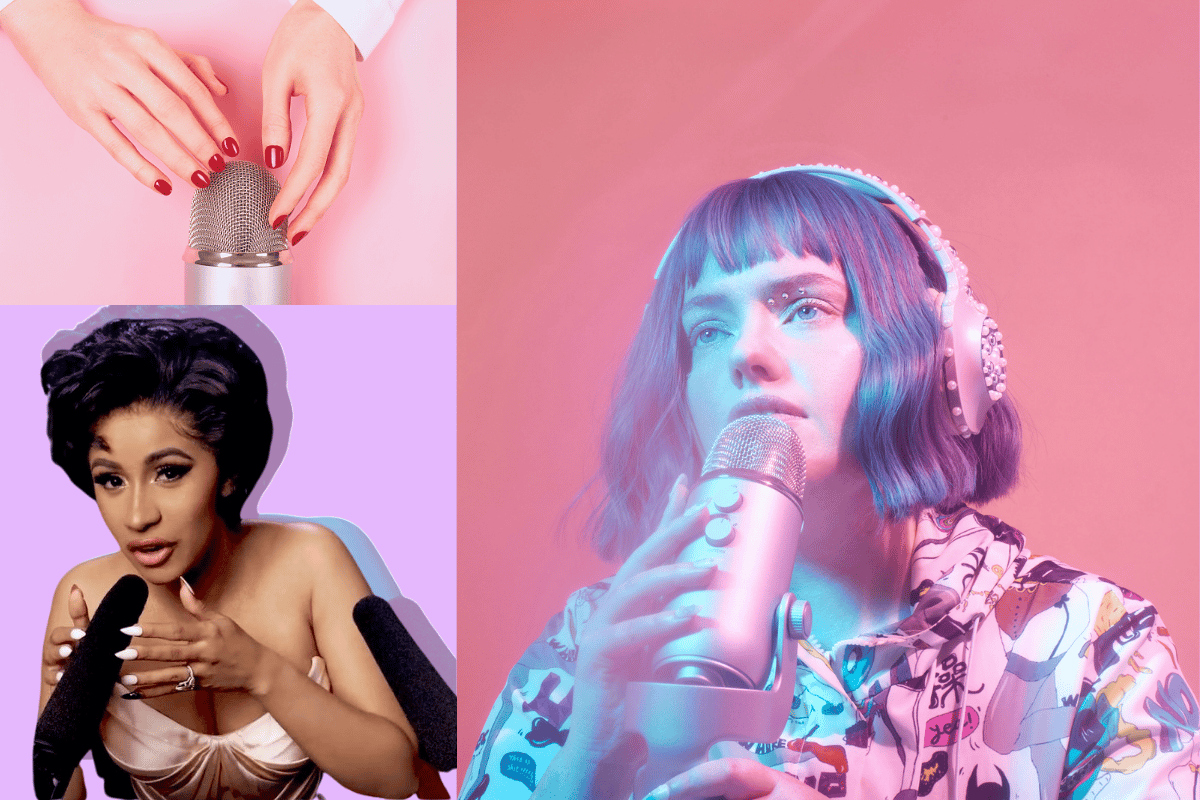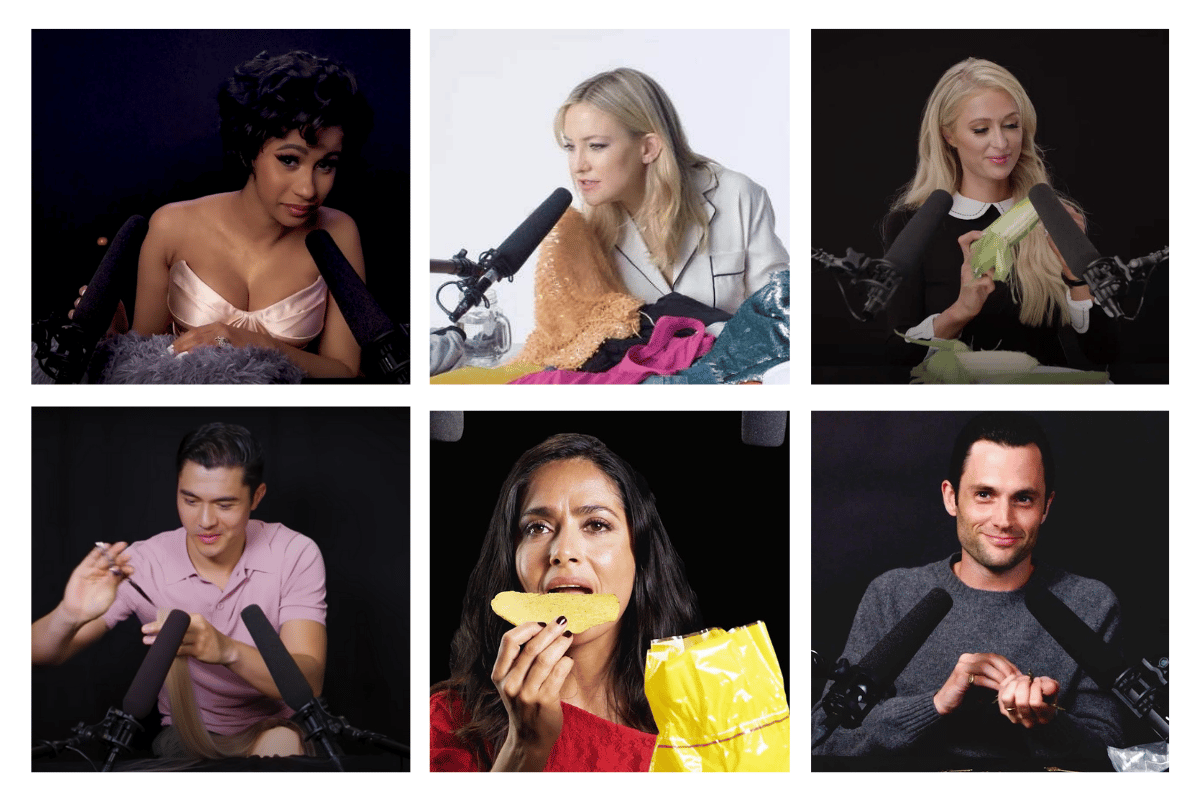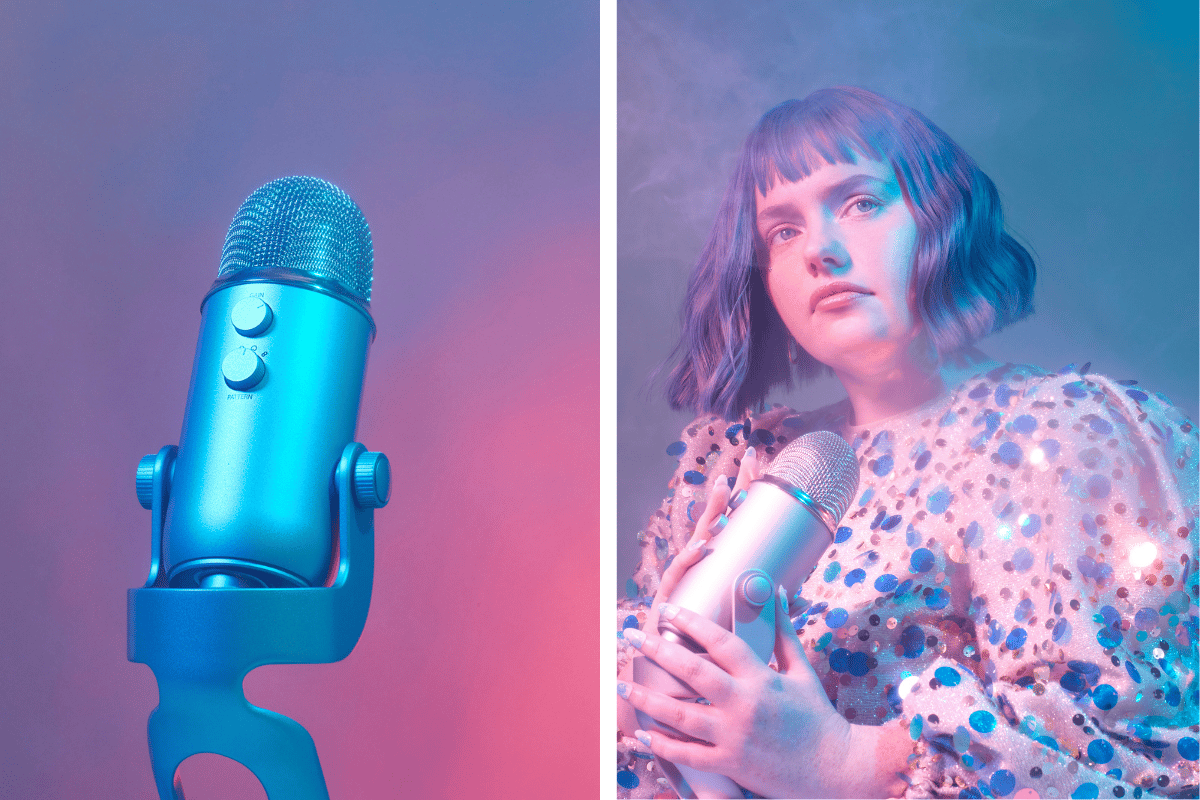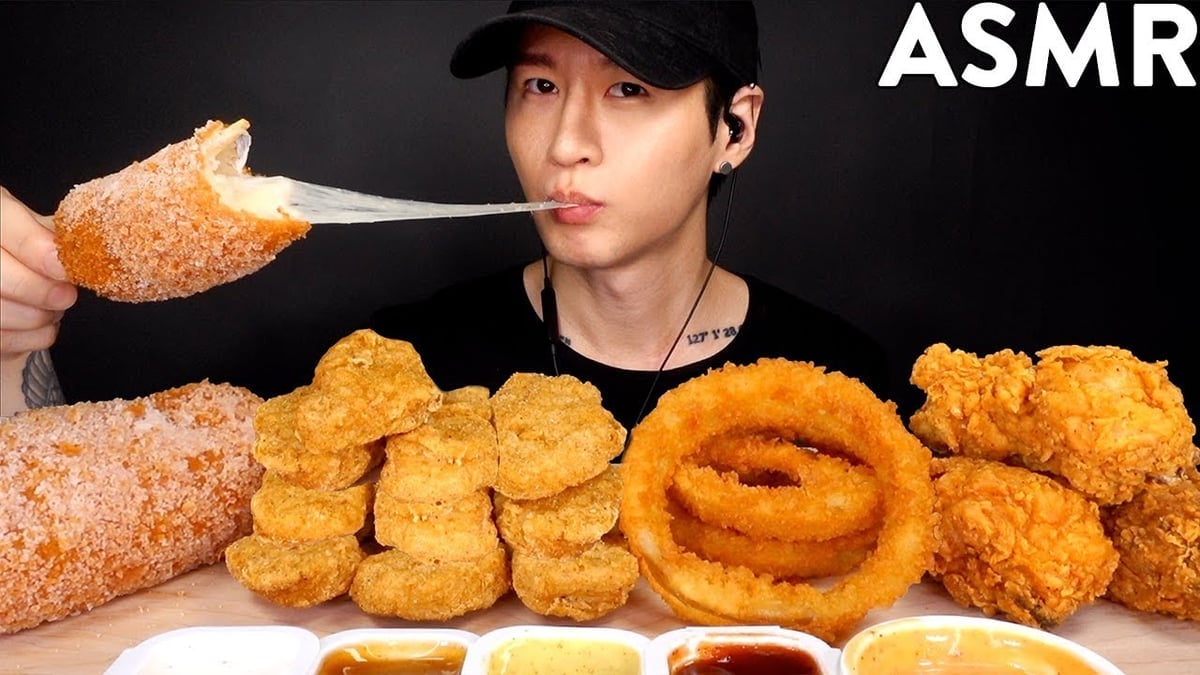
Pretty much every night I fall asleep listening to people I don’t know whisper to me.
Except they’re not in the room.
And funny enough, I’m not the only one who does this.
ASMR is one of the fastest-growing genres on YouTube, with more Australians searching for ASMR on YouTube than ever before.
For those who haven’t heard of it, Autonomous Sensory Meridian Response, or ASMR as it’s more commonly known, refers to the tingling sensation people experience in their scalp and throughout their body when a deep level of relaxation and calm is felt.
Whispering, tapping on random surfaces, chewing noises, relationship roleplays, eating food close up to a microphone: the sub-genres of ASMR are endless.
Watch: What is ASMR? Mia, Holly and Jessie discuss on Mamamia Out Loud. Post continues after video.
After experiencing loneliness, stewing on thoughts in the middle of the night, Laura Nagy would type up the four magic words into her web browser and immediately feel comforted.
“It puts you, or at least me, in a childlike state of relaxation. It kind of feels like being a child and your mum spoils you: playing with your hair, putting you to sleep. It’s super relaxing,” says Laura, a filmmaker and now the writer and narrator of Audible Original’s Pillow Talk. It’s a podcast which unpacks the phenomenon of ASMR.
































































































